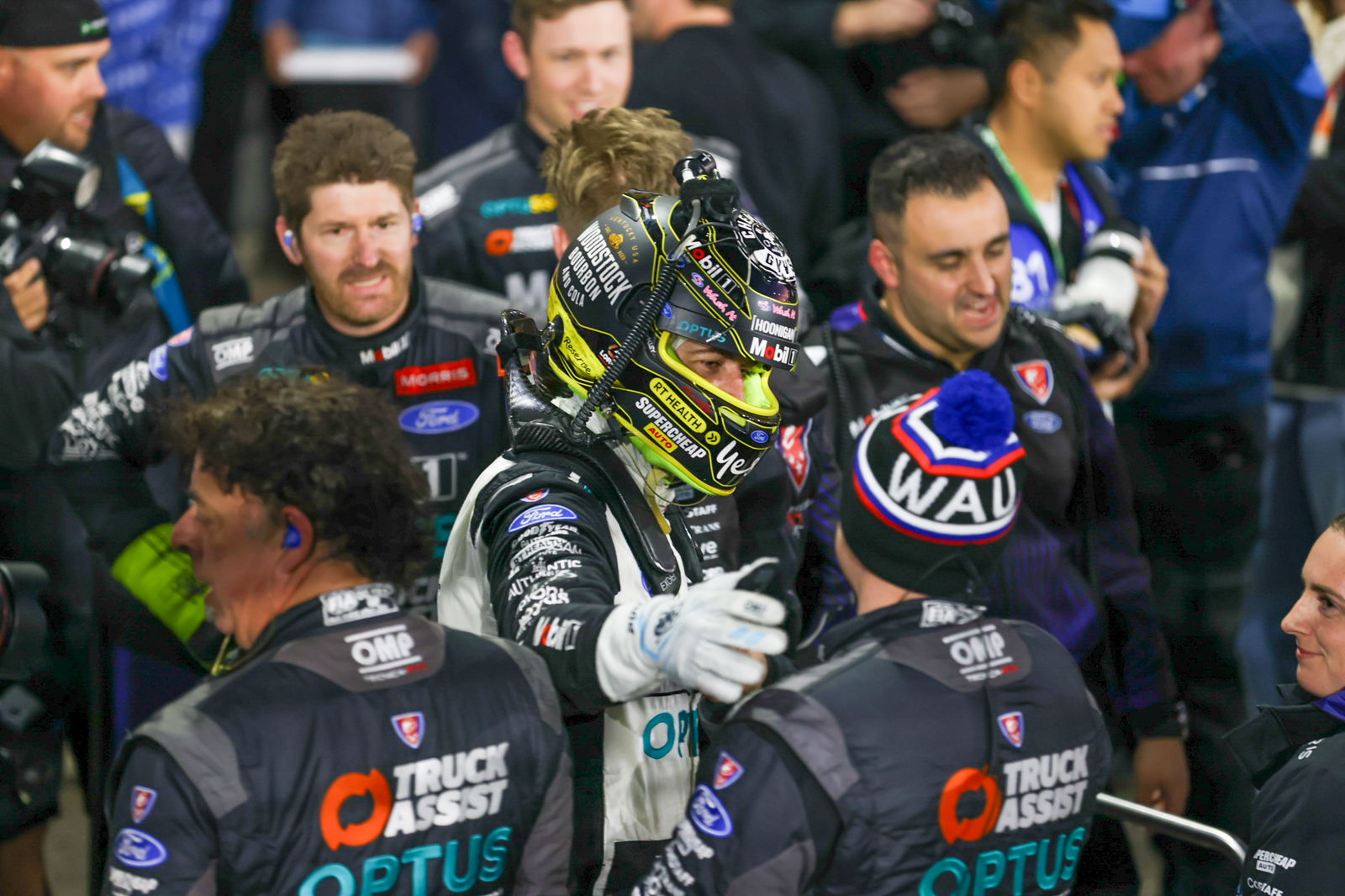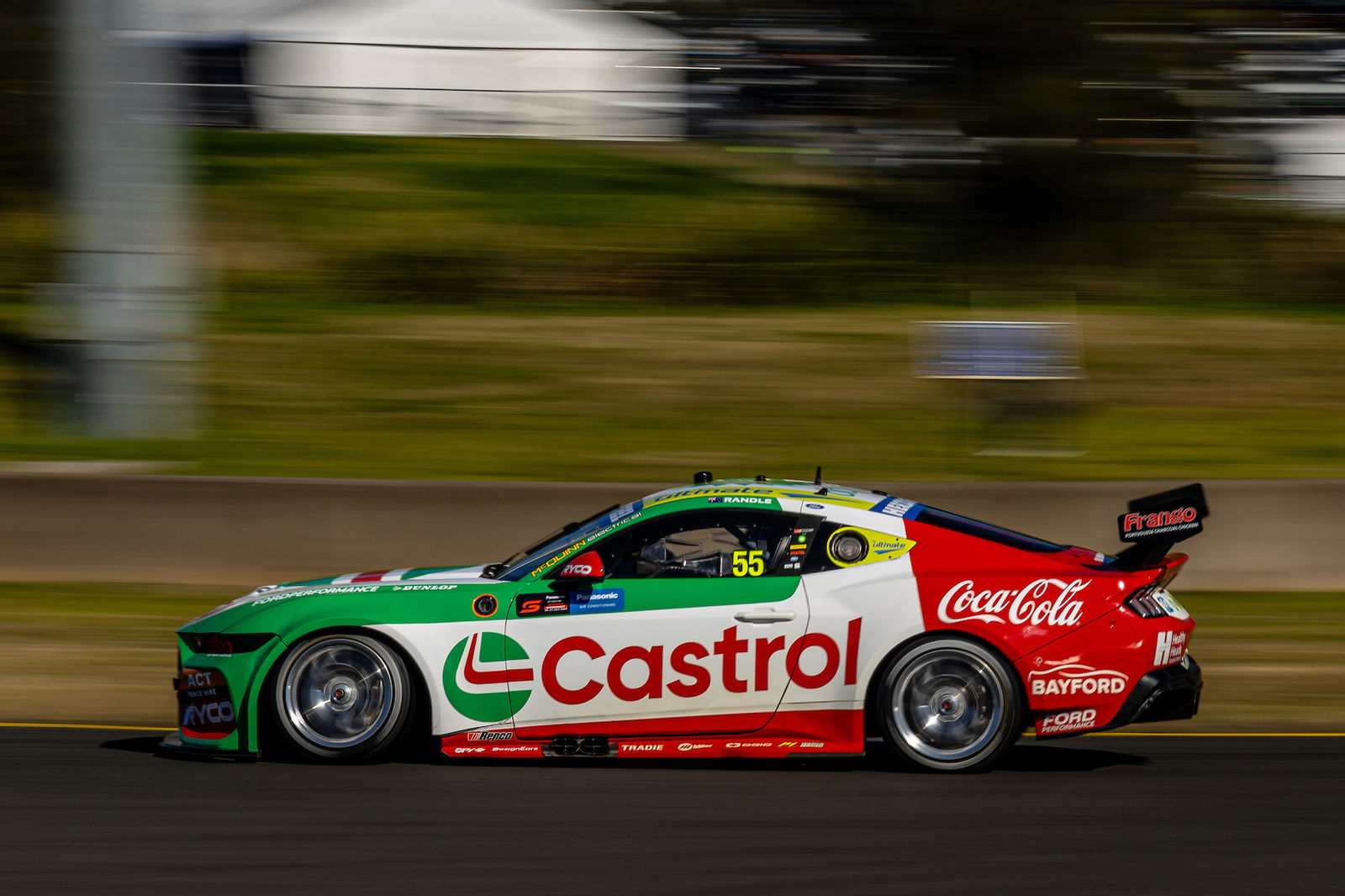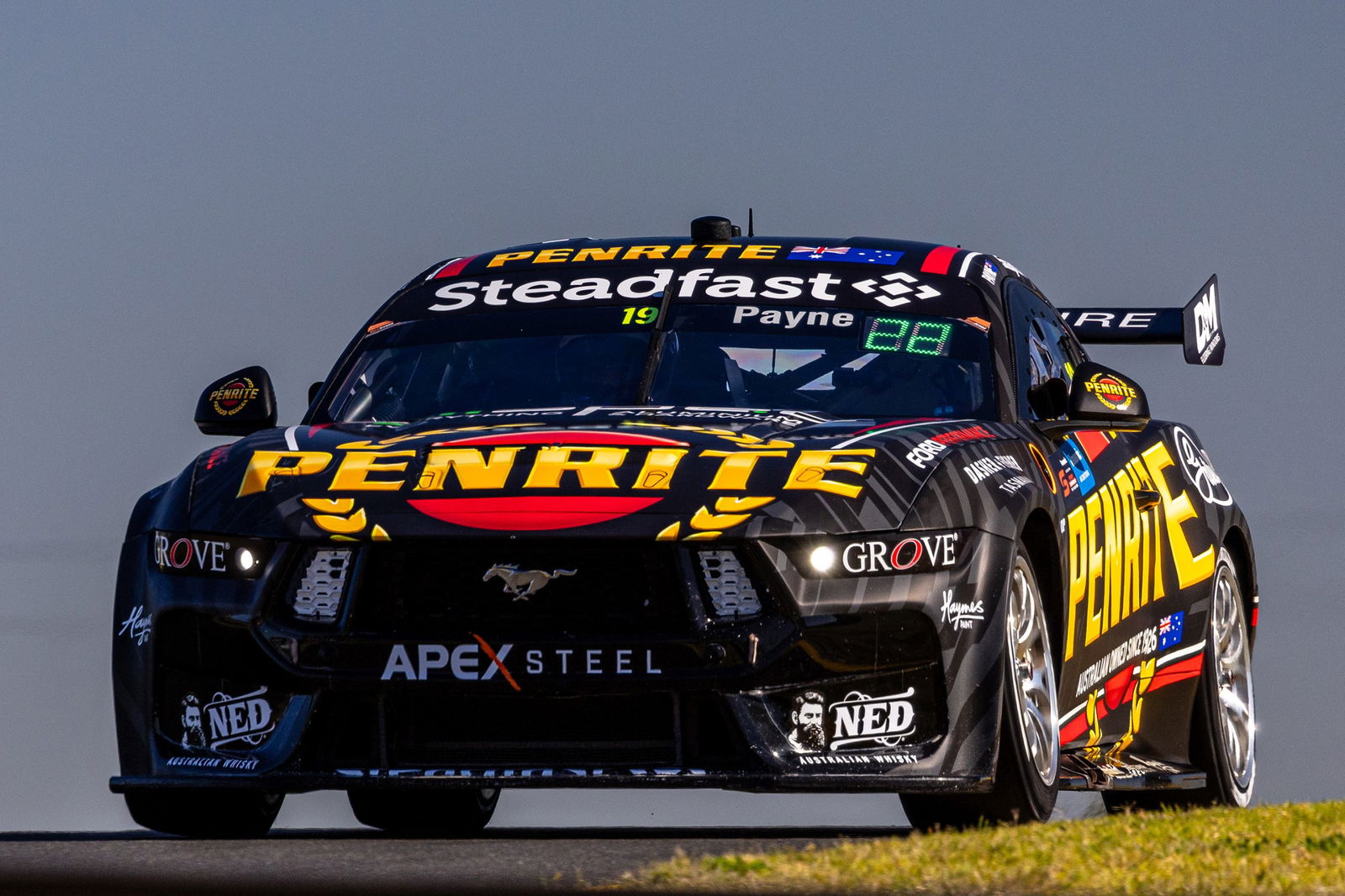

A consequence of the COVID-19 pandemic saw Supercars abandon refueling in most of its events outside the Bathurst 1000.
In their place were sprint races that required drivers to take a minimum of two tyres with the option of changing three or four.
Removing fuel strategy has all but cemented two strategies. Either take the punishment of a slower pit stop and take four tyres and come through the field or maintain position and risk tyre losing time to tyre degradation by taking just two tyres.
While refueling races have slowly returned, it’s not the standard. Thomas Randle, Matt Payne, and Chaz Mostert spoked after Race 15 at the Sydney SuperNight where they backed Supercars to ditch the COVID-mandated sprint format.
“I think [Race 15] showed another great spectacle, another great race with different strategies,” said Mostert after Saturday night’s race.
“The teams really enjoy it, especially the engineers. We have some world class engineers and finally when you have these types of races you create strategy around it.
“Personally I don’t think we should do sprint races anymore. Every race we go to should be a fuel race. It should be a Saturday race and a Sunday race.
“The different tracks and the style of tracks we go to will create different strategies (depending on) what the deg is, how long the pitlane is, and all that kind of stuff.
“But if you go to a sprint race, everyone knows you’ve got to pit once; it’s either at the start of the race or the end of the race and generally you’re going to finish where you start.”

The latest round of the championship at Sydney Motorsport Park was filled with intrigue as drivers experimented with refueling times and whether they pitted once or twice.
Mostert won both races by pitting twice while Payne opted to stop once, climbing 15 places across Race 15 and Race 16 with the bold strategy.
“The options for Matty starting P10 and to do a one-stop, which was super bold, it gave him the ability to come back today with good car speed,” said Mostert.
That sentiment was echoed by Randle, who noted the inverse strategy executed by Payne in Townsville where he pitted three times to push all race long.
“I couldn’t agree more. I like the fact that you look at Townsville and you had Matt Payne on a three stopper,” said Randle.
“We were two-stopping [in Townsville] and this weekend it’s the battle between; is a one-stop faster or is a two-stop faster?
“And you’re still trying to decide before the race what’s the best scenario rather than what the boys have said about sprint races where you know you’re going to take rears or rights or lefts and it’s only one stop.”

Like Mostert, Randle wants Supercars to put a greater emphasis on refueling, tyres, and strategy.
“I like that idea. You’ve really got to get your brain thinking,” he said.
“Same for us driving the car — okay, if we’re going to commit to a two-stop, you’ve got to drive the thing to a two-stopper or vice versa. With a one-stopper like Matt did, it just adds another element.
“The more times that we’re in the pits and doing stops… adding more of that human element into it I think that can only be a good thing.”
Payne backed Supercars to opt for one extreme or the other for its non-endurance races.
In an ideal world, he’d like SuperSprint weekends to either feature the refueling races or all-out sprints with no pit stops, akin to the Australian Grand Prix.
Those races have been a highlight for Gen3 but haven’t been experimented with outside of the Albert Park Grand Prix Circuit.
“I actually really like the longer races. You settle into your rhythm really early on and you’ve got a pretty good idea of what the team is thinking strategy-wise,” said Payne.

“[On Sunday] I think we were one of two cars on a one-stopper. Like Chaz said, I’ve got a 17-second gap after the last pit stop and then you’ve got to chase that down.
“You know there’s going to be a battle at the end, which I think is really exciting for all the fans. So probably wasn’t so exciting from where I was sitting.
“I really enjoy the long races. To be fair. I really like all the races, I think the sprint races at AGP were fun. There’s a lot of battling going on and I think that style of racing is really good and the really long races are fun as well.
“It’s just the middle ground races where it’s not long enough to sort of have a different strategy is where it gets tough.”




















Discussion about this post